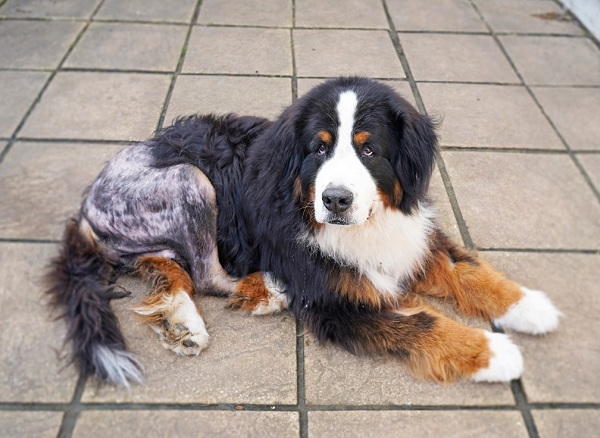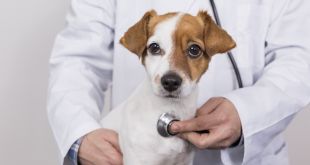Your nine-year-old dog is limping and struggling to stay active – you notice it doesn’t enjoy outdoor activities anymore; this could be due to knee problems. Dogs can also suffer from knee problems, just like human beings.
It is more debilitating for them to manage the pain and difficulty. Most pets are great at expressing pain. However, the intensity of pain and restricting themselves from movements is something; you must help them with.
Understanding how to help your dog recover from a knee injury is tricky. Start by checking with your vet in parallel to making observational notes of their behavior.
Look for the signs of struggle – limping, spreading leg outside while sitting, crying during night time, inactive behavior, and saying NO to food and toys are few to mention.
Relaxation is the best primary rehabilitation
Giving rest to an active dog is always challenging. But being the caregiver, it is essential to restrict their movements. A four to six weeks period is ideal for any knee injury.
If your pet is recovering from surgery (minor or major) or is in rehabilitation, the resting period may vary. Get a thorough check-up with your vet to examine what part of the knee has an injury.
One of the common knee injuries in active and senior dogs is tearing the ligament. In medical terms, it is called Cranial Cruciate Ligament.
When your pet struggles to walk and is limping while getting up or sitting down, it is possibly a CCL issue. You may notice a ‘frog-like’ posture while the dog sits with both hind limbs spread outside their body instead of wrapped inside.
There is a combination of treatments you can try. However, you must ensure your pet has no hip dysplasia or paw injuries. Check with your vet for the various non-surgical options, and you can start simple steps at home:
- Start using a dog crate to encourage your pet to take a rest and restrict the movement.
- Restrict your fur friend from using stairs by installing gates.
- Pouncing and jumping will only cause further damage to the knee. Therefore, ensure your pet doesn’t jump off the furniture or stairs.
- Restrict the activities and keep the dog walks smaller. Use your backyard or close-by park for such activities.
- Use rugs and yoga mats in case of slippery flooring. Sliding and slipping are two significant reasons for further ligament damage.
Practice these for at least a few weeks and then resume to thorough vet check-up for the right line of treatment. When you get a Go-Green signal from the vet for simple activities, you can plan a regimen for your quadruped friend.
Read Also: 8 Excellent Ways to Keep Your Dog Healthy and Happy
Encourage – Support – Appreciate their activities
After a few good weeks of absolute rest, it is time to initiate certain simple activities for your pet. Get the knee recovery examined for stability. Your dog may not leap to start the activities, but through encouragement, lots of love, and patience shall do the magic.
Here are the tricks and tips to help your pet recover from knee pain:
- Swimming is one of the primary and effective ways of helping with any bone and muscle injury.
- Short walks with intermittent breaks of sitting and treats are also good.
- Use the curb to constantly walk up and down to support the dog using all four limbs.
- Gentle games and plays like fetch are great fun. You can also try tugging with your pet to build the hind legs.
- Constantly monitor pain intensity and support it with anti-inflammatory medication to manage it. When the pain is bearable, pushing your pet for more activities is easier.
Diet is the key to a speedy recovery
You cannot achieve a healthy body without a balanced diet; the same goes for your pets. Stick with the diet plan you get from the vet, but you can improve on it.
Ensure no food or treat leads to a weight gain for your pet. Healthy body weight is a key to brisk knees. Look for high-quality, freshly prepared, nutrient-rich products for your dog.
Try combinations of fish-based treats like salmon, which are a brilliant source of Omega-3 fatty acids. You can also combine the daily healthy diet with supplements that boost anti-inflammatory properties to support faster recovery.
Try feeding digestible meals like broth and gooey food. Bone broths are an excellent source to improve bone and tendon support.
Read Also: Boost your dog’s diet: 8 healthy herbs for dogs
The wrap-up
Dogs are one of the most intelligent animals on this planet. They hold a profound sense of pain and will never stop exhibiting it to you every time – however, be strong and support them if any such situation arises.
When you notice injury through limping or irritable behavior, encourage your dog to try and continue the rehabilitation sessions. After the prescribed amount of physical rest, it is significant to brave the pain and shun the lethargy.
It is usual for your dog to feel lame and uninterested after the bouts of anti-inflammatory medication and pain killers. You are the caregiver.
Hence, take some assertive actions towards gradual movements, exercises, and simple walks. Avoid freight training as it might worsen the situation to a great extent. Any heavy activity like running, extensive use of stairs, jumping, and activity that puts stress on the knees is a strict NO-NO.
Show loads of patience and compassion towards your pet. Treat them with love, empathy, and continuous encouragement to appreciate the efforts they are putting in during recovery.

 DogExpress
DogExpress


















 in Chandigarh, India.
in Chandigarh, India. 
